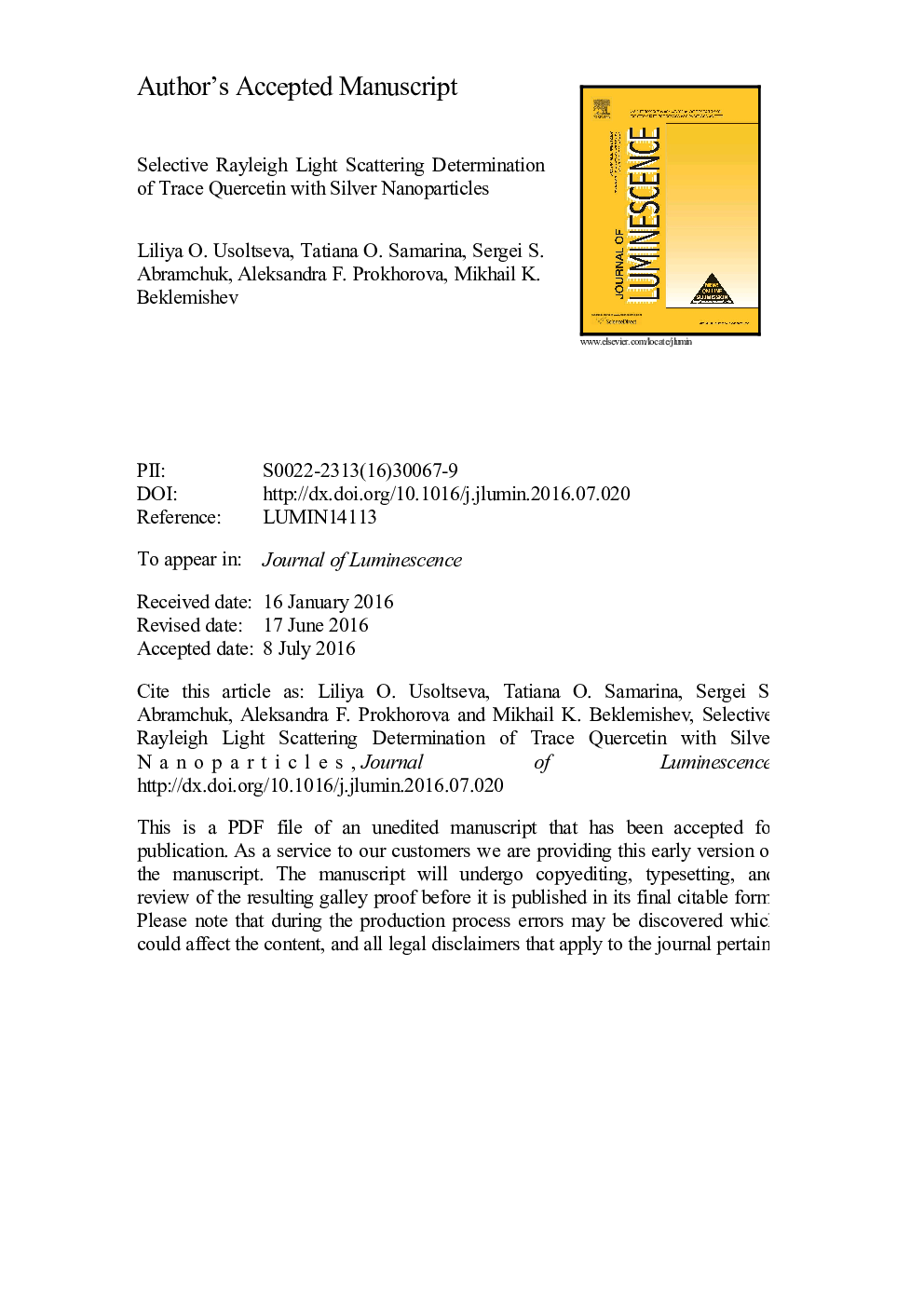| Article ID | Journal | Published Year | Pages | File Type |
|---|---|---|---|---|
| 5398348 | Journal of Luminescence | 2016 | 22 Pages |
Abstract
Rayleigh light scattering (RLS) is a simple technique with a high potential of sensitive determination of small organic molecules. We have found that ppb amounts of quercetin (Qu) greatly enhance the RLS of the solution of silver nanoparticles (AgNPs) stabilized with cetyltrimethylammonium bromide (CTAB) or sodium n-dodecyl sulfate (SDS). Enhancement of light scattering is observed only in the presence of an excess of AgNO3, which implies that it is a result of nanoparticle growth; another reason for the enhanced scattering is the aggregation of AgNPs by the analyte that was confirmed by dynamic light scattering technique. The conditions were chosen for the determination of Qu in aqueous solution with the detection limits of 0.01 and 0.03 μmol Lâ1 and linear ranges of 0.1-1.3 and 0.1-2.0 μmol Lâ1 for SDS- and CTAB-stabilized AgNPs, respectively; the intra-day RSDs did not exceed 7%. Unexpectedly, other bioflavonoids (rutin, dihydroquercetin, and naringenin) did not change the signal of Qu and did not interfere with its determination in 1:1 M ratio (0.5 μmol Lâ1 each). Other compounds (asparagin, uric acid, urea and some inorganic ions) were also tolerated in high amounts.
Keywords
Related Topics
Physical Sciences and Engineering
Chemistry
Physical and Theoretical Chemistry
Authors
Liliya O. Usoltseva, Tatiana O. Samarina, Sergei S. Abramchuk, Aleksandra F. Prokhorova, Mikhail K. Beklemishev,
